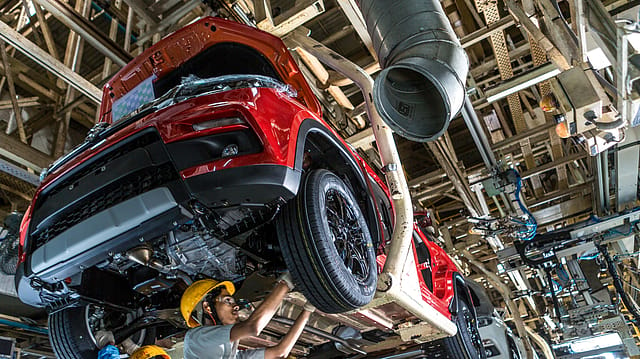India tops Japan to become world’s 3rd largest auto market
ADVERTISEMENT

India surpassed Japan in new auto sales in 2022, making it the third-largest market for the first time, Nikkei Asia reported. The year 2022 saw India selling 4.25 million units of new vehicles, preliminary results show, while more than 4.2 million units were sold in Japan.
The Nikkei Asia, whose business portfolio includes publishing, broadcasting and the Nikkei 225 stock index, said easing chip shortage helped top auto companies in India like Maruti and Tata Motors record a boost in sales in 2022.
"New vehicles delivered in India totalled 4.13 million between January and November 2022, according to the Society of Indian Automobile Manufacturers. Adding December's sales volume reported by Maruti Suzuki, India's largest carmaker, brings the total to roughly 4.25 million units."
India's overall auto sale volume is higher than 4.25 million units because the recently released vehicle retail data for December 2022 by FADA(Federation of Automobile Dealers Associations of India) shows 16.2 lakh units were sold in December month.
China's auto market topped the chart in the year 2021 as 26.27 vehicles were sold in the year, followed by the US at 15.4 million and Japan at 4.44 million. India, which was on the fourth place, sold around 4 million units in the year amid the global chip shortage issue.
January 2026
Netflix, which has been in India for a decade, has successfully struck a balance between high-class premium content and pricing that attracts a range of customers. Find out how the U.S. streaming giant evolved in India, plus an exclusive interview with CEO Ted Sarandos. Also read about the Best Investments for 2026, and how rising growth and easing inflation will come in handy for finance minister Nirmala Sitharaman as she prepares Budget 2026.
The auto market in India has seen a lot of fluctuation in the recent past. The data shows that roughly 4.4 million vehicles were sold in the country in 2018, and the number fell below 4 million units in 2019 amid the NBFC crisis that year. The following year (2020) saw the Covid pandemic hit the country hard and the overall sales dropped below 3 million units.
Despite a pick-up in pace for EV adoption, India is still a nascent market for EVs and most vehicles are powered by gasoline.
As per Sunjay Kapur, President, ACMA, despite the challenges, the Indian auto component industry witnessed a rapid growth of 23%, as the turnover of the industry contributed 2.3% of India's GDP at ₹4.20 lakh crore.
He attributed factors such as strong and diversified demand, skilled workforce, and precision engineering to the expansion of the Indian automotive industry. Also, as per an ACMA-McKinsey report, by 2030 the contribution of EVs in new two-wheeler and three-wheeler vehicle sales will rise to 50% and 70%, respectively.
Moreover, the Centre's Production Linked Incentive (PLI) programme for the automobile sector (with a $3.5 billion budget) offers financial incentives of up to 18% to stimulate local production of future technology-related automotive components. The government has also implemented Faster Adoption and Manufacturing of Hybrid & Electric Vehicles in India (FAME) to encourage the adoption of EVs through subsidies. Currently, phase II of the scheme is under effect for 5 years starting from 2019, with a total budget of ₹10,000 crore.
Notably, only 8.5% of Indian households own a passenger vehicle in 2021, data by a UK-based research firm Euromonitor shows, adding that there's immense room for higher sales in the country.
